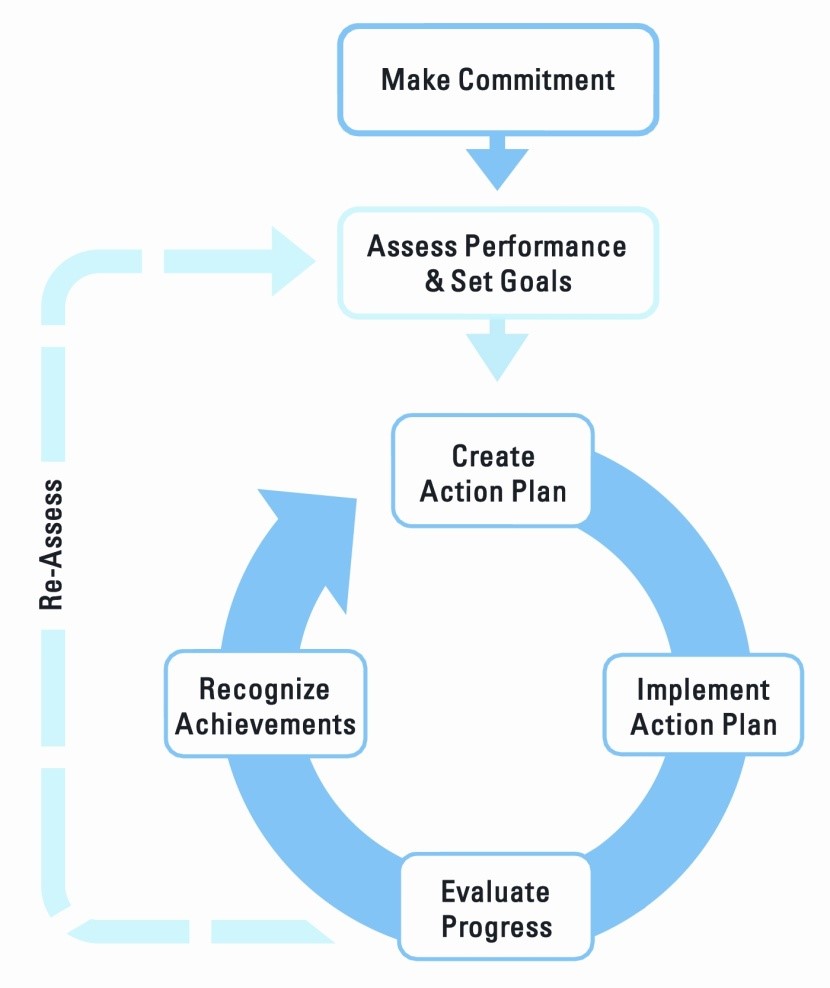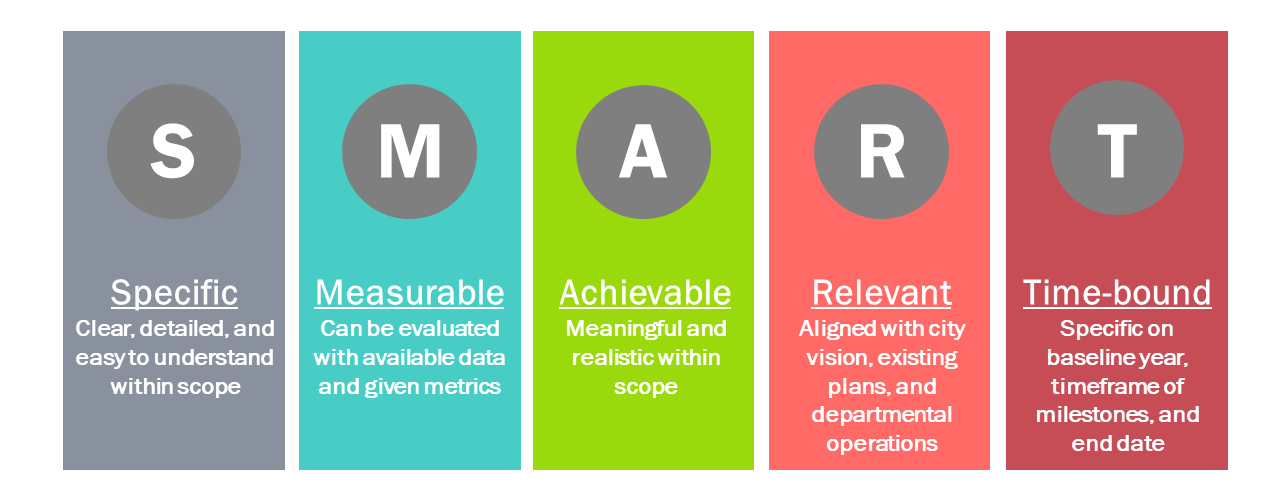“By failing to prepare, you are preparing to fail.”
― Benjamin Franklin
As we discussed in the introduction, there are many reasons why a local government may want to pursue energy efficiency internally and support community energy efficiency goals. Having a plan to achieve these energy efficiency goals may seem like an obvious first action in supporting energy efficiency in Texas. Yet many Texas cities still take a reactive approach to energy management and few have a formal program to consistently identify, implement, and assess comprehensive energy efficiency. Approaching energy management with a plan and structure can make the process run smoother and ultimately maximize the benefits of your energy efficiency efforts.
Before embarking on any strategic planning process, including development of an energy management program, the first question your organization should ask is “why.” Why is energy management and energy efficiency important to your city? Defining an overarching vision of the desired outcome of the program will help guide the decisions that will drive the nuts and bolts of the program. If your organization is driven to save money, in the short term, low cost with fast payback projects like lighting retrofits may be best suited, whereas community-wide climate action planning may drive a program focused more on community and policy initiatives. Take time and care in defining your problem statement in order to ensure your planning process leads your organization down the intended path.
There are many models for developing an energy management program. The US Environmental Protection Agency’s ENERGY STAR Guidelines for Energy Management is a systematic approach to planning an energy management program and is a good place to start.
ENERGY STAR Guidelines for Energy Management

STEP 1: Commit to continuous improvement:
- Appoint an Energy Director
- Establish an Energy Team
- Institute an Energy Policy
STEP 2: Assess Performance
- Gather and track data
- Baseline and benchmark
- Analyze data
- Technical assistance and audits
STEP 3: Set Goals
- Determine scope
- Estimate potential for improvement
- Establish (SMART) goals
STEP 4: Create Action Plan
- Define technical steps and targets
- Determine roles and responsibilities
STEP 5: Implement Action Plan
- Create a communications plan, raise awareness, build capacity, and motivate
- Track and monitor
STEP 6: Evaluate Progress
- Measure results
- Review action plan
STEP 7: Recognize Achievements
- Internal and external recognition
The scoping and goal setting of Step 3 is essential in understanding intended outcomes, providing structure to day-to-day actions, and measuring progress. The SMART goal framework can help ensure the goals developed are clear and effective. “SMART” goals are: Specific, Measureable, Attainable, Relevant, and Time-Bound.
Adapted from Local Government Energy Management Goals: Best Practices and Platforms:
- Specific: Goals should be detailed, clear, and easy to understand with defined metrics and scope.
- Measurable: Progress toward achievement of goals should be measurable with available data and progress trackable over time.
- Attainable: Goals should strike a balance between meaningful, ambitious, and realistic. Build in intermediate steps to achieve longer term ambitious goals. Assessing if a goal is attainable means benchmarking current energy management to assess savings potential; surveying funding, resources, and political will; and learning from peer city achievements.
- Relevant: Don’t try to fit a square peg into a round hole. Goals should align or work in concert with city vision, existing plans, and departmental operations. Use short term goals to lay the foundation for longer term projects that require organizational or priority shifts.
- Time-Bound: Establish a clear baseline year for goals and a timeline with specific intermediate milestones.
The State Energy Conservation Office (SECO) offers FREE services that can provide invaluable planning assistance including Preliminary Energy Assessments and Technical Assistance to uncover energy efficiency potential and help determine scope. SECO’s Remote Energy Audit program provides turnkey data gathering and baselining to help set your organization on its way to energy efficiency action.